Begonia Gryphon, a stunning addition to the world of houseplants, boasts unique characteristics that make it a favorite among plant enthusiasts. This begonia belongs to the Begonia genus, which comprises a diverse array of species, each with its own charm. But what sets Begonia Gryphon apart?
Key Features of Begonia Gryphon:
- Begonia Gryphon is a hybrid plant known for its striking foliage, characterized by silvery-green leaves with intricate textures and patterns.
- Its leaves resemble angel wings, with a silver sheen and dark green veins that create an enchanting contrast.
- Begonia Gryphon is a compact, low-maintenance plant, making it suitable for both novice and experienced gardeners.
In the following sections, we’ll delve deeper into the genus and species of this captivating plant and explore its captivating appearance.
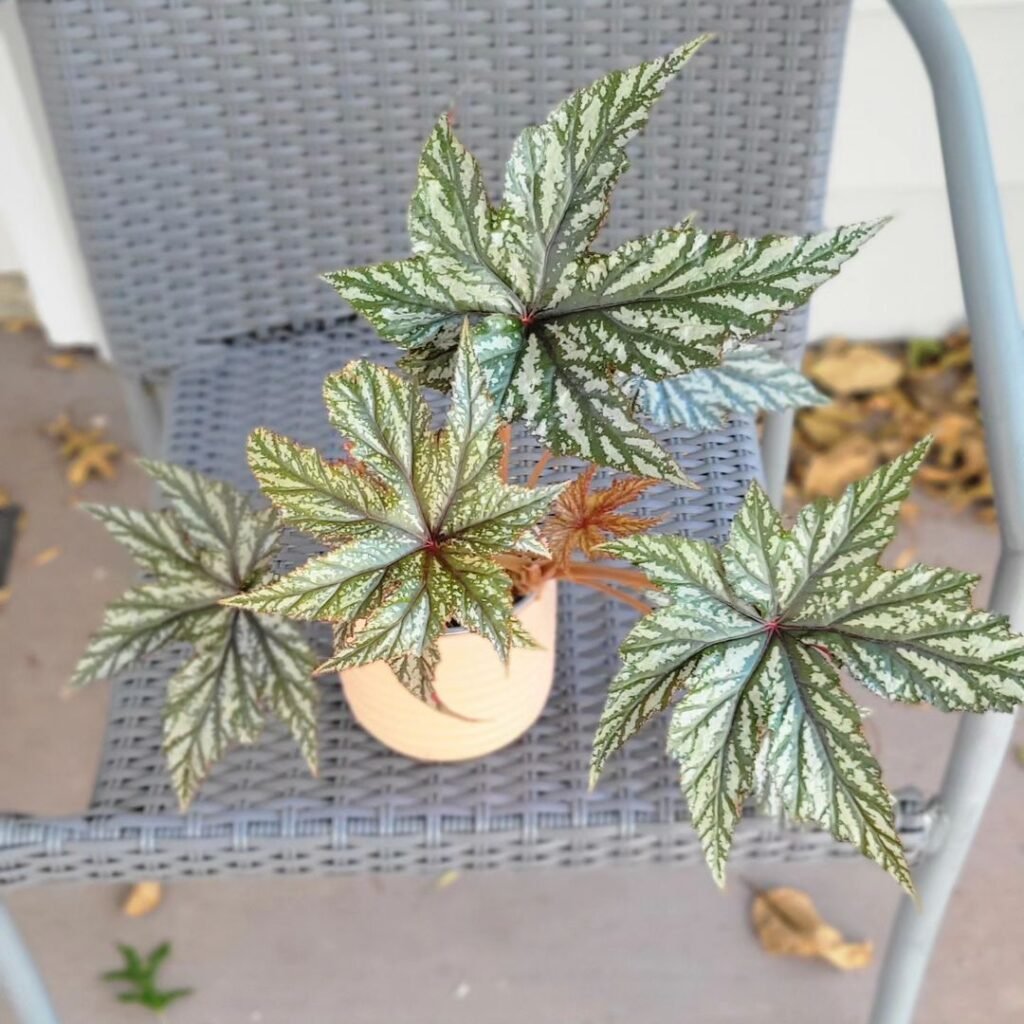
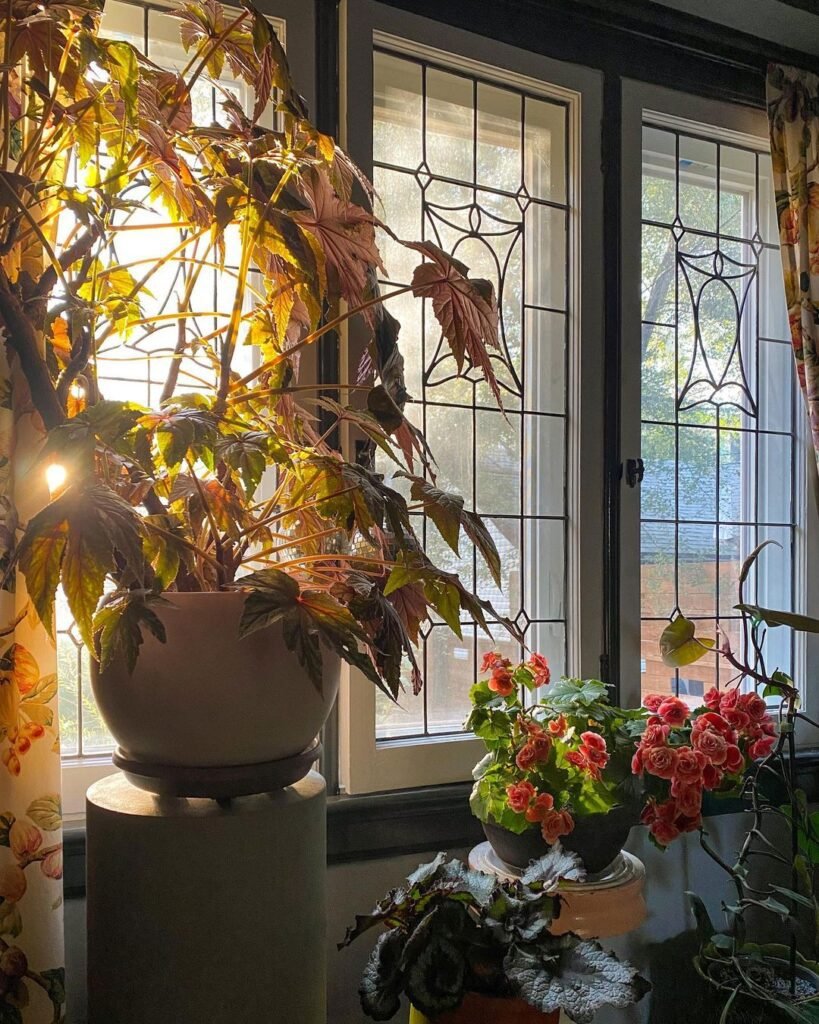
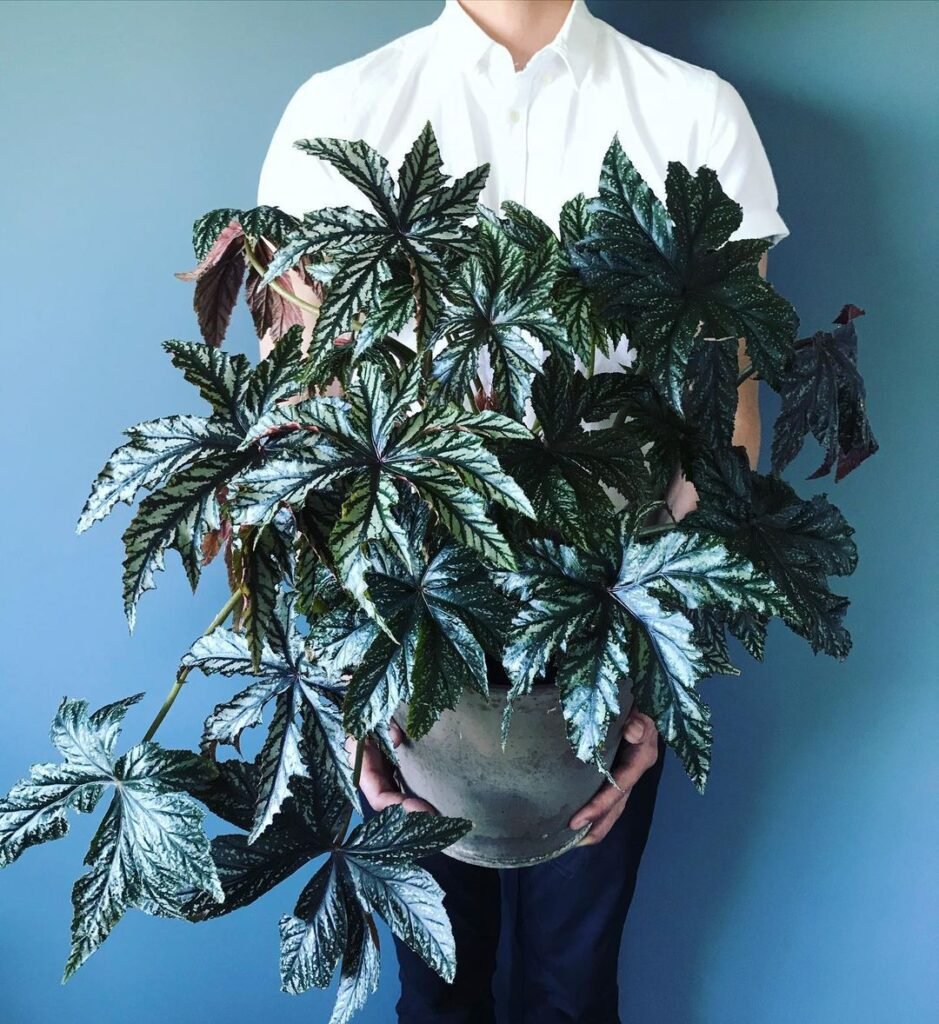
Genus Species
The Origin of Begonia Gryphon
Understanding the genus and species of Begonia Gryphon is vital to appreciate its botanical lineage and characteristics. Begonia Gryphon belongs to the Begonia genus, which encompasses a wide variety of species, while its specific species classification is Begonia ‘Gryphon.’
Genus Begonia: Begonias are part of a diverse and extensive plant genus that includes over 1,800 species. This genus belongs to the family Begoniaceae and is native to tropical and subtropical regions worldwide. Known for their ornamental value, Begonias have captured the hearts of plant enthusiasts for centuries.
Begonia Gryphon’s Species Classification: Begonia Gryphon, with its stunning silver-green leaves, is a hybrid begonia that has been meticulously bred to create a captivating combination of beauty and resilience. Its species classification, ‘Gryphon,’ is a testament to its uniqueness and distinctiveness in the world of begonias.
Begonia Gryphon Appearance
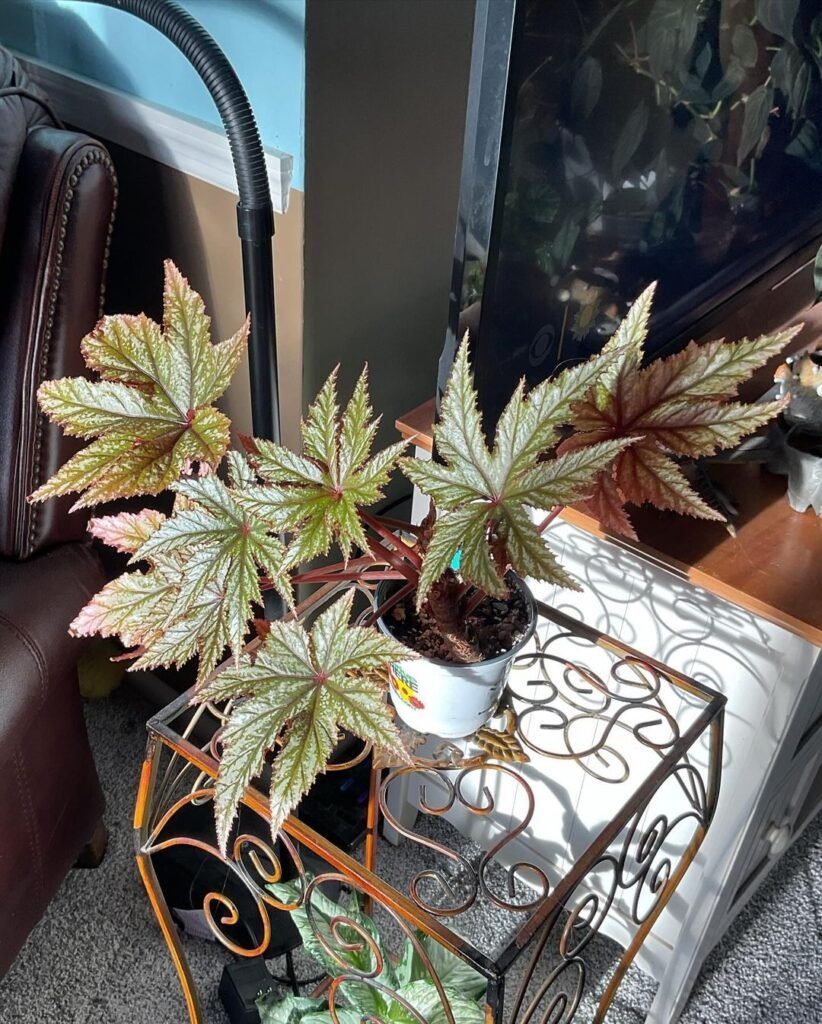
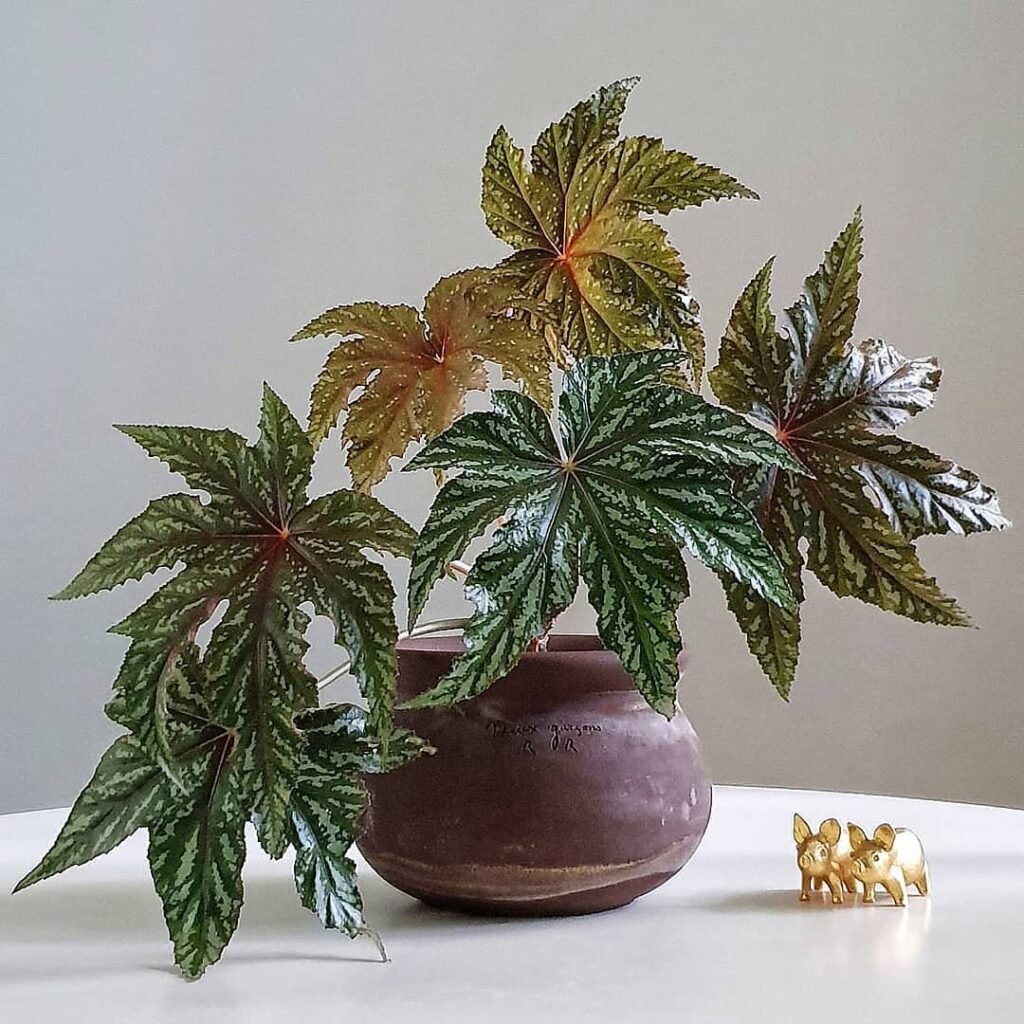
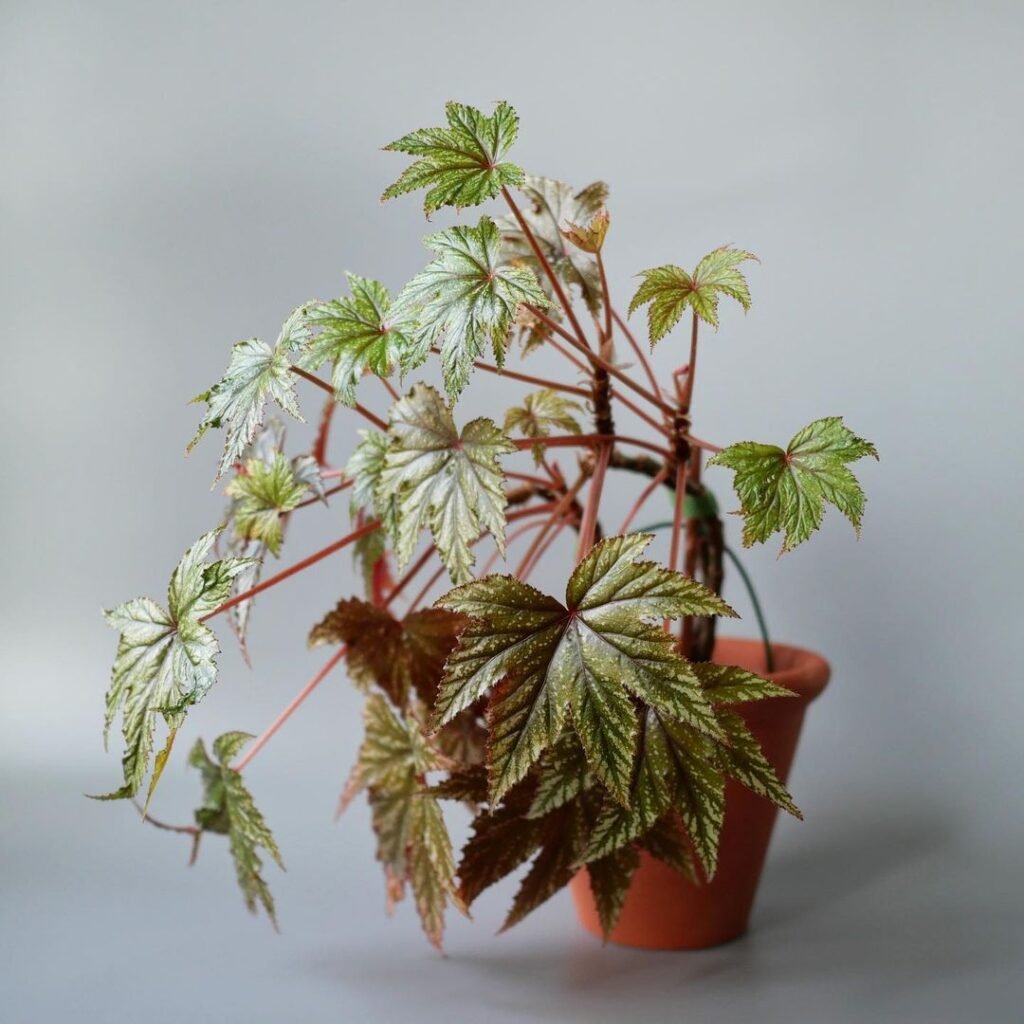
Aesthetic Elegance in Every Leaf
One of the most captivating aspects of Begonia Gryphon is its enchanting appearance. The visual appeal of this plant sets it apart from other houseplants, making it a popular choice among interior decorators and plant enthusiasts.
Notable Features of Begonia Gryphon’s Appearance:
- Foliage: The standout feature of Begonia Gryphon is its angelic foliage. The leaves have a unique silvery-green hue with intricate patterns and textures. The silver sheen on the leaves adds a touch of elegance to any room.
- Leaf Shape: The leaves of Begonia Gryphon resemble angel wings, giving the plant a celestial quality. They are asymmetrical and often have dark green veins that create a striking contrast with the silver background.
- Size: This begonia is a compact plant, typically reaching a height of about 12 to 18 inches, making it suitable for small spaces and tabletop displays.
- Growth Habit: Begonia Gryphon grows in a bushy, upright manner, making it a perfect choice for both potted plants and hanging baskets.
With its striking foliage and elegant presence, Begonia Gryphon has the ability to elevate the aesthetics of any room.
Not the plant for you? Check out my full list of 78 Types of Begonia!
Begonia Gryphon Care Tips
Nurturing Your Begonia Gryphon to Flourish
Caring for Begonia Gryphon requires attention to specific details to maintain its health and ensure it flourishes. Here are some essential care tips for keeping your Begonia Gryphon in pristine condition.
Light Requirements:
- Indirect Light: Begonia Gryphon thrives in bright, indirect sunlight. Avoid exposing it to direct sunlight, as it can scorch the delicate leaves. A north or east-facing window is ideal.
Soil Needs:
- Well-Draining Soil: Plant your Begonia Gryphon in well-draining soil with organic matter. A mix of potting soil, perlite, and peat moss works well.
Temperature and Humidity:
- Optimal Temperature: Maintain a temperature range between 65°F to 75°F (18°C to 24°C). Avoid extreme temperature fluctuations.
- Humidity: Begonia Gryphon enjoys high humidity levels. You can increase humidity by using a humidity tray or a room humidifier.
Watering Guidelines:
- Even Moisture: Keep the soil consistently moist but not soggy. Allow the top inch of the soil to dry before watering again.
- Watering Method: Water the plant at the base to prevent water from touching the leaves, which can cause fungal issues.
Fertilizing Routine:
- Regular Fertilization: Feed your Begonia Gryphon with a balanced, water-soluble fertilizer every 4-6 weeks during the growing season (spring to early autumn).

Begonia Gryphon Light and Soil Requirements
Providing the Perfect Environment
Begonia Gryphon’s health and vitality depend significantly on the light and soil conditions it receives. In this section, we’ll delve into the specific requirements for light and soil to ensure your Begonia Gryphon thrives.
Light Requirements: Begonia Gryphon, like many begonia varieties, flourishes in bright, indirect light. Here’s a breakdown of its light preferences:
- Ideal Light: Place your Begonia Gryphon in a location that receives bright, filtered sunlight. A north or east-facing window is typically the best spot. Avoid exposing it to direct sunlight, as intense sun rays can scorch the delicate leaves.
- Artificial Lighting: If natural light is insufficient, you can use artificial grow lights. Position the lights about 12-18 inches above the plant and maintain a light schedule of 12-14 hours per day.
Soil Requirements: Begonia Gryphon’s soil requirements are equally important to its overall well-being. To ensure your plant thrives, pay attention to the following soil considerations:
- Well-Draining Soil: Begonia Gryphon prefers well-draining soil to prevent waterlogged roots. A suitable potting mix includes a combination of potting soil, perlite, and peat moss.
- Container Choice: Select a pot or container with drainage holes to allow excess water to escape, further preventing root rot.
Now that we’ve covered the light and soil needs, let’s move on to the critical topic of watering your Begonia Gryphon.
Watering Begonia Gryphon
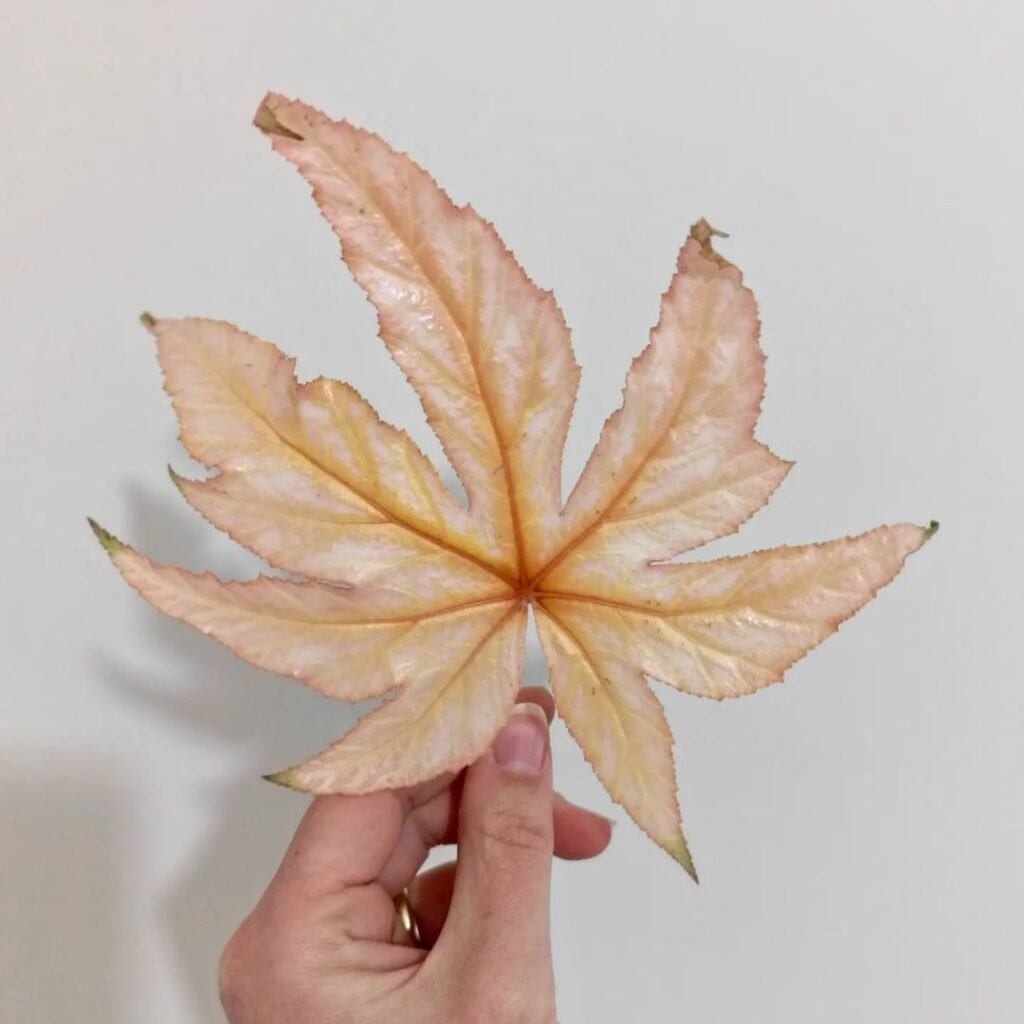
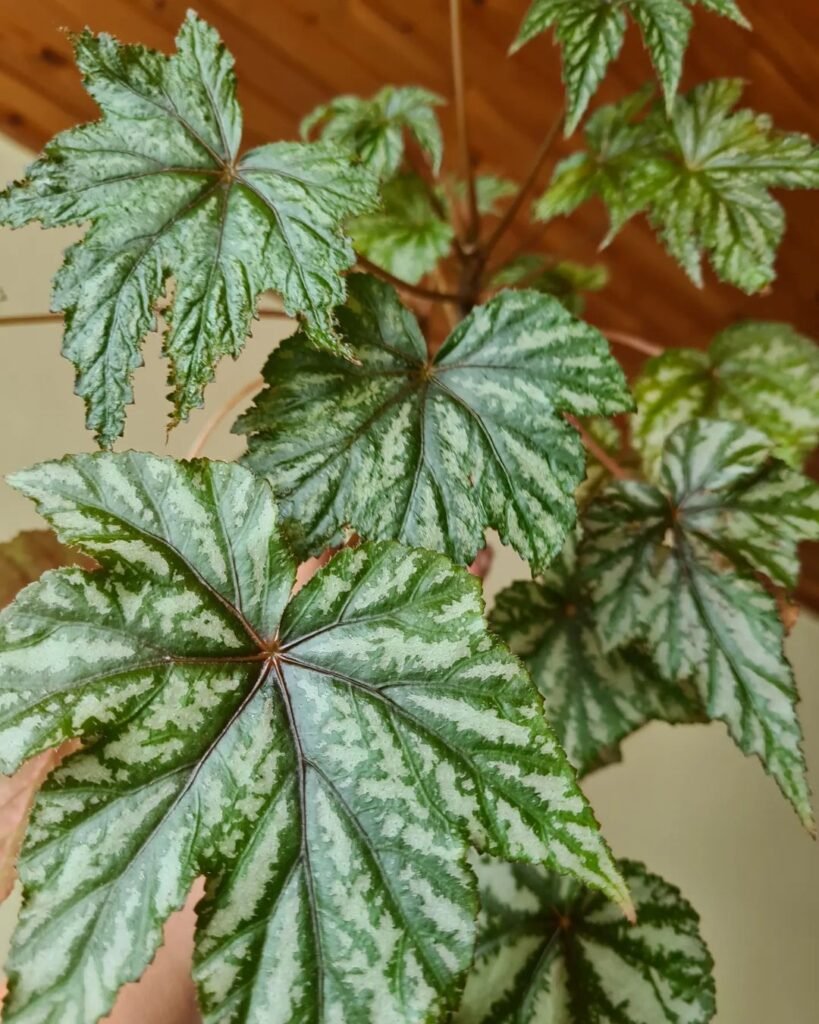
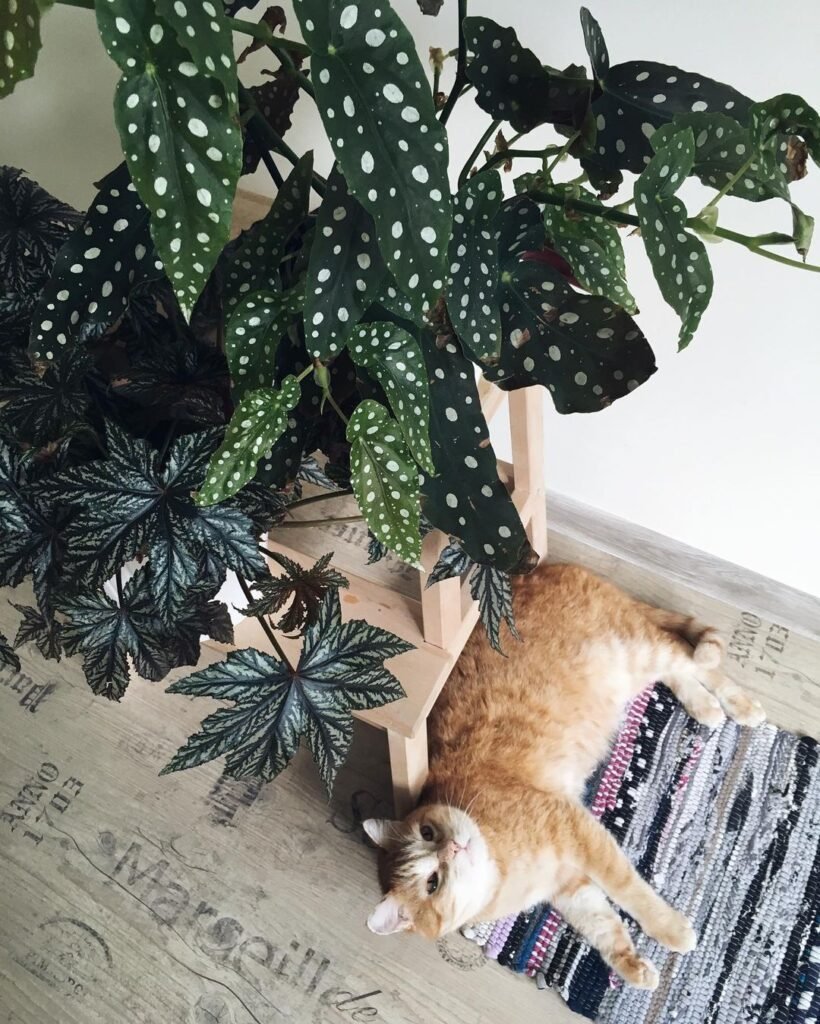
Nurturing with the Right Amount of Moisture
Proper watering is a crucial aspect of Begonia Gryphon care. Over-watering or under-watering can lead to issues, so let’s explore how to provide the right amount of moisture for your plant.
Watering Guidelines: Begonia Gryphon requires consistent and adequate moisture, but it’s essential not to overwater. Here are some watering tips to help you maintain the ideal moisture level:
- Moist, Not Soggy: Keep the soil consistently moist, but avoid letting it become waterlogged. To determine when it’s time to water, insert your finger into the soil about an inch deep. If it feels dry at this depth, it’s time to water.
- Watering Technique: When watering, it’s best to water at the base of the plant, avoiding the leaves. Wet leaves can lead to fungal issues. Allow excess water to drain from the pot, ensuring the roots aren’t sitting in standing water.
- Water Quality: Use room-temperature, distilled water or rainwater to avoid mineral build-up in the soil, which can harm the plant.
- Seasonal Adjustments: During the growing season (spring to early autumn), Begonia Gryphon typically requires more frequent watering. In the dormant season (late autumn and winter), reduce watering frequency but ensure the soil doesn’t completely dry out.
By following these watering guidelines, you’ll help your Begonia Gryphon maintain the right level of moisture, promoting its health and vitality.
Begonia Gryphon Humidity and Temperature
Creating the Ideal Environment
Humidity and temperature play a significant role in the overall well-being of your Begonia Gryphon. These environmental factors can impact the plant’s growth and appearance, so let’s explore how to create the ideal conditions.
Humidity Requirements: Begonia Gryphon thrives in higher humidity levels, typical of its native tropical and subtropical environments. Here’s how to maintain the right humidity for your plant:
- Humidity Tray: Place a humidity tray filled with water and pebbles near your Begonia Gryphon. As the water evaporates, it increases the humidity around the plant.
- Room Humidifier: If you live in a dry climate or struggle to maintain adequate humidity levels, consider using a room humidifier to create a more suitable environment.
Temperature Considerations: Begonia Gryphon has specific temperature preferences for optimal growth:
- Temperature Range: Keep your Begonia Gryphon in a temperature range of 65°F to 75°F (18°C to 24°C) during its active growing season (spring to early autumn).
- Avoid Drafts: Ensure your plant is not exposed to cold drafts or sudden temperature fluctuations, which can stress the plant.
- Winter Care: During the dormant season (late autumn and winter), maintain a slightly cooler temperature (around 60°F or 15°C) to promote the plant’s rest.
Creating a balanced environment with adequate humidity and appropriate temperatures is key to ensuring your Begonia Gryphon thrives. Next, we’ll cover essential topics such as fertilizing, pruning, propagation, and seasonal care to further enhance your plant care knowledge.
Fertilizing Begonia Gryphon
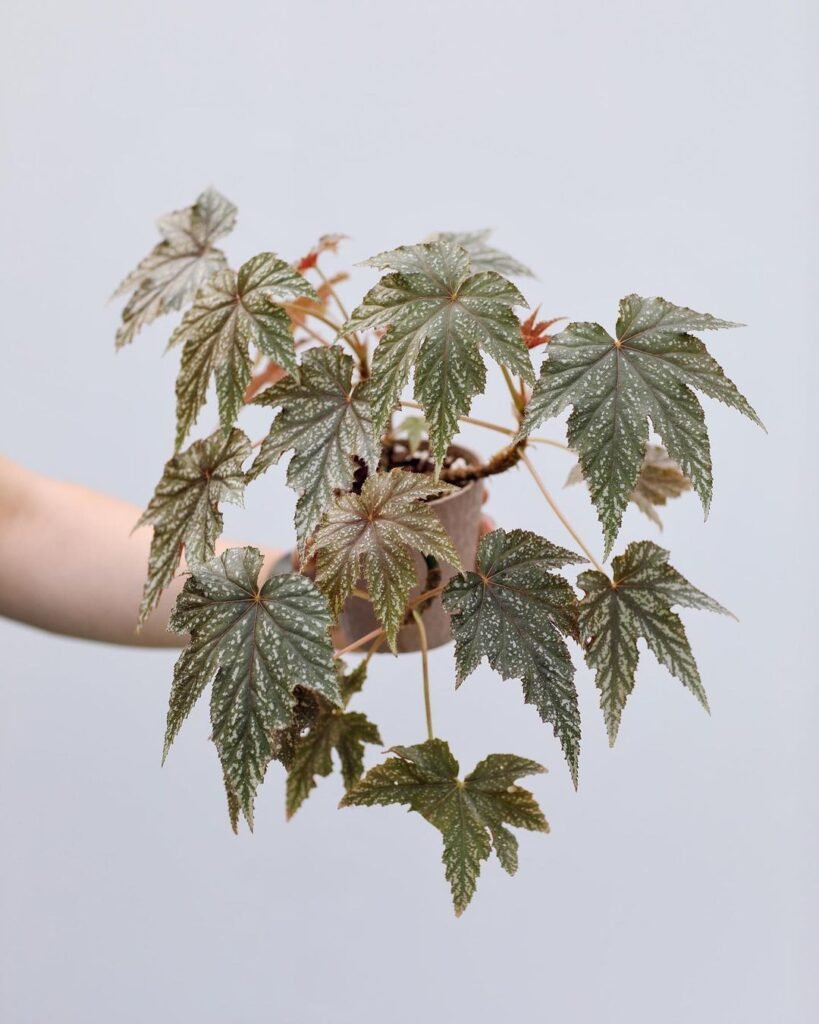
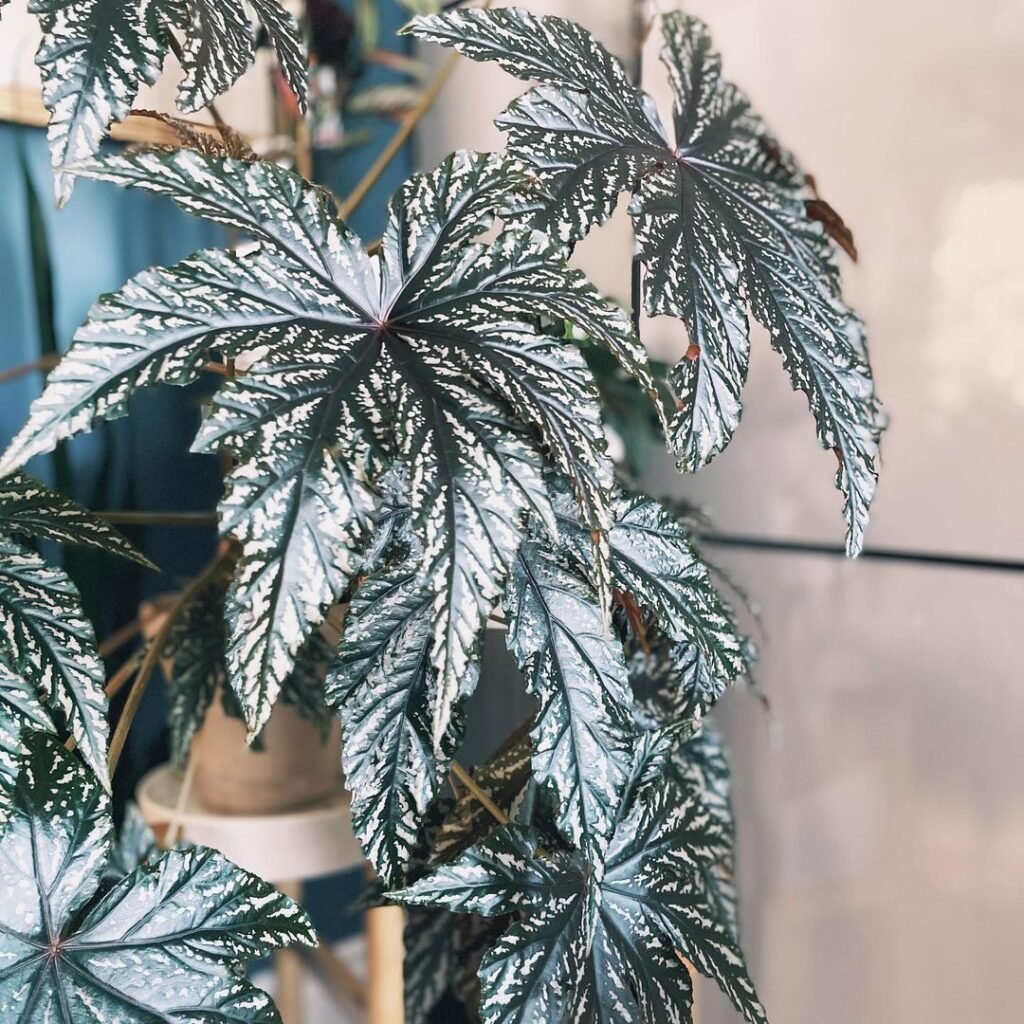
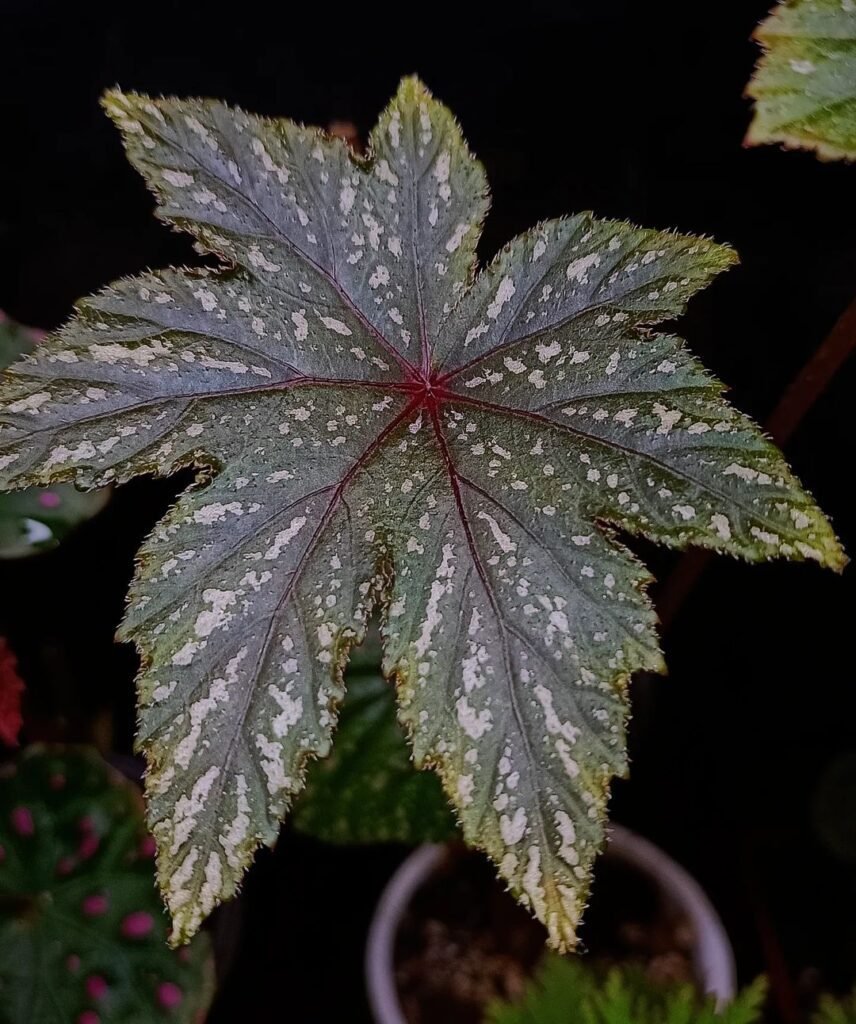
Nourishing Your Begonia Gryphon
Proper fertilization is vital to the health and growth of your Begonia Gryphon. In this section, we’ll explore the best practices for nourishing your plant with the right nutrients.
Fertilizing Routine: To keep your Begonia Gryphon healthy and vibrant, follow these fertilization guidelines:
- Frequency: During the growing season (spring to early autumn), feed your Begonia Gryphon every 4-6 weeks. Use a balanced, water-soluble fertilizer with equal parts of nitrogen, phosphorus, and potassium (N-P-K).
- Dilution: Always follow the manufacturer’s instructions for diluting the fertilizer. A half-strength solution is usually sufficient to prevent over-fertilization, which can damage the plant.
- Application: Apply the fertilizer to moist soil to avoid root burn. Ensure that the fertilizer doesn’t come into contact with the leaves, as this can cause burning or damage.
- Winter Rest: During the dormant season (late autumn and winter), reduce or suspend fertilization, as the plant’s growth slows down.
By following these fertilization guidelines, you’ll provide your Begonia Gryphon with the essential nutrients it needs to thrive.
Begonia Gryphon Pruning and Shaping
Maintaining Your Plant’s Form
Pruning and shaping your Begonia Gryphon can help it maintain a tidy appearance and encourage healthy growth. Here’s how to keep your plant in its best form.
Pruning Tips:
- Remove Dead or Yellowing Leaves: Regularly check your Begonia Gryphon for dead or yellowing leaves and remove them to maintain a clean and healthy appearance.
- Pinch Back Leggy Growth: If your plant becomes leggy or sparse, pinch back the stems to encourage bushier growth. Pinch just above a leaf node to promote branching.
- Cut Back Overgrown Shoots: If your Begonia Gryphon becomes too large or unruly, you can cut back longer stems to the desired length. Use clean, sharp scissors or pruning shears.
Shaping Your Plant:
- Bushy Growth: To encourage a bushier growth habit, pinch the tips of new growth regularly. This will result in a more compact and lush appearance.
- Hanging Baskets: If you’re growing Begonia Gryphon in a hanging basket, periodically trim and shape the plant to maintain a balanced and cascading form.
- Training Vines: If your plant has vining growth, you can train the vines to grow in the desired direction by attaching them to supports or trellises.
Proper pruning and shaping not only enhance the aesthetics of your Begonia Gryphon but also help maintain its overall health.
Begonia Gryphon Propagation and Repotting

Expanding Your Begonia Family
Propagating Begonia Gryphon allows you to create new plants and share them with fellow plant enthusiasts. Additionally, repotting is essential to ensure your plant has adequate space to grow. Let’s delve into both aspects.
Propagation Methods: Begonia Gryphon can be propagated through several methods, including:
- Leaf Cuttings: You can take healthy leaf cuttings and place them in a pot with moist, well-draining soil. New plants will grow from these cuttings.
- Stem Cuttings: Another option is taking stem cuttings with at least one leaf and placing them in a suitable potting mix. This method is effective for propagating multiple plants at once.
- Division: When repotting, you can divide a mature Begonia Gryphon into smaller sections with roots and leaves, creating new individual plants.
Repotting Guidelines:
- Timing: Repot your Begonia Gryphon when it becomes root-bound or outgrows its current container. Spring is usually the best time for repotting, as the plant enters its active growing season.
- Selecting a Pot: Choose a slightly larger pot with good drainage. Ensure it has enough room for the plant to grow comfortably.
- Repotting Process: Gently remove the plant from its old pot, and carefully separate the roots if dividing. Place the plant in the new pot with fresh potting mix and water thoroughly.
- Adjusting Care: After repotting, your Begonia Gryphon may need some time to adjust. Be mindful of watering and light exposure during this period.
By mastering the art of propagation and repotting, you can expand your Begonia Gryphon collection and maintain the health of your beloved plant. Next, we’ll explore seasonal care, companion plants, and pest control tips to ensure your Begonia Gryphon thrives in all conditions.
Begonia Gryphon Seasonal Care
Adapting to the Changing Seasons
Begonia Gryphon, like many plants, requires different care routines depending on the season. In this section, we’ll explore how to adapt your care practices to the changing seasons to ensure your plant thrives year-round.
Spring Care:
- As spring ushers in the growing season, increase your Begonia Gryphon’s water and fertilizer intake. Resume regular fertilization and ensure the soil remains consistently moist.
Summer Care:
- During the hot summer months, monitor your plant’s water needs closely. Water more frequently to prevent the soil from drying out. Shield your Begonia Gryphon from direct sunlight to avoid leaf scorch.
Fall Care:
- In preparation for the dormant season, reduce the frequency of watering and cease fertilization. This helps your Begonia Gryphon naturally transition into its resting period.
Winter Care:
- As your plant enters dormancy, maintain a cooler temperature range (around 60°F or 15°C) and reduce watering significantly. Provide lower light levels, as Begonia Gryphon’s growth slows during this time.
By adjusting your care routines to the changing seasons, you’ll ensure that your Begonia Gryphon remains healthy and happy year-round.
Begonia Gryphon Companion Plants
Creating Beautiful Plant Combinations
Pairing your Begonia Gryphon with compatible companion plants can enhance the aesthetics of your indoor garden and provide mutual benefits. Here are some excellent companion plants to consider:
1. Ferns: Boston ferns or maidenhair ferns complement the lush greenery of Begonia Gryphon and thrive in similar humidity conditions.
2. Calathea: The striking foliage of various Calathea species adds an artistic touch to your plant collection. These plants appreciate high humidity and indirect light.
3. Peace Lily (Spathiphyllum): With its elegant white blooms, Peace Lily contrasts beautifully with the textured leaves of Begonia Gryphon. Both plants thrive in low to moderate light.
4. Pothos (Epipremnum aureum): Pothos vines make fantastic hanging companions for Begonia Gryphon, and they are both relatively low-maintenance.
5. Snake Plant (Sansevieria): Snake plants provide a vertical element to your plant display and are known for their air-purifying properties.
When selecting companion plants, consider their care requirements, including light, water, and humidity, to ensure they are compatible with your Begonia Gryphon.
Pest Control Tips for Begonia Gryphon
Protecting Your Plant from Intruders
While Begonia Gryphon is generally hardy, it may occasionally face pest problems. It’s important to recognize and address these issues promptly. Here are some common pests and tips for controlling them:
1. Aphids: These small, soft-bodied insects can cluster on the leaves and feed on plant sap. Control aphids by spraying the plant with a mixture of water and a few drops of dish soap.
2. Mealybugs: Mealybugs are tiny, cotton-like pests that gather in leaf crevices and on stems. Remove them using a cotton swab dipped in rubbing alcohol.
3. Spider Mites: These microscopic pests can create fine webbing on the plant and cause leaf stippling. Shower your Begonia Gryphon with water to dislodge spider mites, or use neem oil as a natural remedy.
4. Fungus Gnats: These small flies are often attracted to overwatered soil. Allow the top layer of soil to dry out between waterings and use yellow sticky traps to catch adult gnats.
5. Scale Insects: Scale insects look like small, raised bumps on leaves and stems. Remove them gently with a cotton swab dipped in rubbing alcohol.
By keeping a watchful eye on your Begonia Gryphon and implementing these pest control tips, you can protect your plant from potential intruders and maintain its health.
Now that we’ve covered seasonal care, companion plants, and pest control, you’re well-equipped to care for your Begonia Gryphon. In the upcoming sections, we’ll discuss how to revive a sick or wilting Begonia Gryphon, provide answers to frequently asked questions, and conclude our comprehensive guide.
Reviving a Sick or Wilting Begonia Gryphon
Nursing Your Plant Back to Health
If your Begonia Gryphon is showing signs of distress, it’s essential to take action promptly to revive it. Here’s a step-by-step guide on how to nurse your plant back to health:
1. Assess the Issue:
- Examine your Begonia Gryphon carefully to identify the specific problems. Look for symptoms such as yellowing leaves, wilting, or pest infestations.
2. Adjust Light and Water:
- Ensure your plant is receiving the right amount of light. Move it to a location with appropriate lighting conditions.
- Adjust your watering routine. Overwatering can lead to root rot, while underwatering can cause wilting. Find the right balance.
3. Pruning and Grooming:
- Trim away dead or yellowing leaves to encourage new growth.
- Remove any affected areas to prevent the spread of disease or pests.
4. Pest Control:
- If pests are the issue, apply appropriate remedies as mentioned earlier, such as neem oil or soapy water.
5. Repotting (if necessary):
- If the root system is compromised or if the plant has outgrown its pot, consider repotting it into a fresh, well-draining mix.
By following these steps and addressing the specific issues your Begonia Gryphon is facing, you can nurse it back to health and restore its vitality.
Love all types of Begonia? Make sure to catch up on my post on how to care and grow for begonia melanobullata. After you’ve finished reading that, why not also check out my care guide on how to grow Begonia corallina.
FAQs
How often should I water my Begonia Gryphon?
Water your Begonia Gryphon when the top inch of soil feels dry. This typically translates to watering every 1-2 weeks, but the frequency may vary based on factors like temperature and humidity. Always check the moisture level of the soil before watering.
Can I grow Begonia Gryphon outdoors?
Begonia Gryphon is primarily grown as an indoor houseplant, as it thrives in controlled conditions. However, in some regions with mild, tropical climates, you can consider placing it in a shaded or protected outdoor area during the summer months.
How can I increase humidity for my Begonia Gryphon?
To boost humidity around your Begonia Gryphon, you can use a humidity tray filled with water and pebbles. Position a room humidifier nearby or group plants together, as they release moisture through transpiration. Misting the plant can help temporarily, but be cautious not to over-wet the leaves.
What should I do if my Begonia Gryphon’s leaves turn yellow?
Yellowing leaves can be caused by various factors, including overwatering, underwatering, or insufficient light. First, check the soil’s moisture level and adjust your watering routine. Ensure your plant is receiving adequate indirect light. Prune and remove severely affected leaves to encourage new growth.
Can I propagate Begonia Gryphon from a single leaf?
Yes, Begonia Gryphon can be propagated from a single healthy leaf. Select a mature leaf, cut it into sections, and plant them in a suitable potting mix. New plants will sprout from the leaf sections.
Conclusion
Cultivating Beauty and Elegance with Begonia Gryphon
In conclusion, Begonia Gryphon is a remarkable houseplant that adds beauty and elegance to any indoor space. With its unique silver-green foliage and relatively low-maintenance requirements, it’s a favorite choice for both novice and experienced gardeners.
To successfully care for your Begonia Gryphon, pay attention to its light, soil, and water needs, as well as humidity and temperature considerations. Fertilize it regularly during the growing season, and take the time to prune and shape your plant to maintain its form.
Additionally, understanding how to propagate and repot your Begonia Gryphon allows you to expand your collection and keep your plant thriving. In case of any issues, follow our guide to revive a sick or wilting plant.
By applying the knowledge and tips provided in this comprehensive guide, you can create a lush, thriving environment with Begonia Gryphon as the centerpiece, adding a touch of natural elegance to your home.
Thank you for choosing Begonia Gryphon as your plant companion. Happy gardening!

Writer/Green Thumb/Explorer – Rooted deep in the rich soils of Devon, I’ve cultivated a vast expertise in plant care, helping greenery thrive in homes across the UK. When I’m not crafting detailed plant care guides, I’m journeying through the lush landscapes of the West Country, unearthing nature’s secrets and sharing them with fellow plant enthusiasts. Every leaf has a story, and I’m here to tell it.





